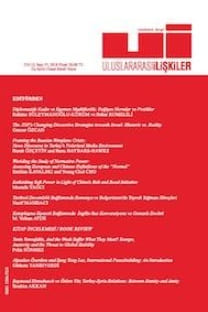Amit Bein, Kemalist Turkey and the Middle East: International Relations in the Interwar Period
Amit Bein’s well-researched monograph introduces an alternative way of looking at Turkey’s engagement with the Middle East in the interwar period. Using a wide range of Turkish, Arabic and English archival materials, plus an abundant number of contemporary newspapers, magazines, travel accounts and memoirs, the author challenges the widely-accepted view in the secondary literature that Kemalist Turkey deliberately disengaged with its Middle Eastern neighbours and argues that this view is “a serious overstatement of the realities” (p. 240). Adopting an approach that goes beyond the state-to-state understanding of diplomatic history, this book covers not only border issues (Chapter 2), regional relations and security (Chapter 3), but also projects for transportation networks within the region (Chapter 4) and Turkey’s efforts to create a good image in the Middle East through the use of propaganda (Chapter 5 and 6).
Amit Bein, Kemalist Turkey and the Middle East: International Relations in the Interwar Period
Amit Bein’s well-researched monograph introduces an alternative way of looking at Turkey’s engagement with the Middle East in the interwar period. Using a wide range of Turkish, Arabic and English archival materials, plus an abundant number of contemporary newspapers, magazines, travel accounts and memoirs, the author challenges the widely-accepted view in the secondary literature that Kemalist Turkey deliberately disengaged with its Middle Eastern neighbours and argues that this view is “a serious overstatement of the realities” (p. 240). Adopting an approach that goes beyond the state-to-state understanding of diplomatic history, this book covers not only border issues (Chapter 2), regional relations and security (Chapter 3), but also projects for transportation networks within the region (Chapter 4) and Turkey’s efforts to create a good image in the Middle East through the use of propaganda (Chapter 5 and 6).
Keywords:
Turkey, Middle East, Kemalism,
- ISSN: 1304-7310
- Başlangıç: 2004
- Yayıncı: Uluslararası İlişkiler Konseyi Derneği İktisadi İşletmesi
Sayıdaki Diğer Makaleler
Amit Bein, Kemalist Turkey and the Middle East: International Relations in the Interwar Period
20. Yüzyıl Başında Hicaz Vilayeti’nde Bir Rus Diplomatı
Anayasal Bir Tasarım Olarak AB Yarı Başkanlık Hükümet Sistemi
Kim İşbirliği Yapmak İster? ABD, AB ve Çin Arasındaki Ticaret Savaşının Uzun Dönemli Analizi
Askeri Harcamalar ve Demokrasi
Güvenlikleştirmenin 20 Yılı: Gücü, Sınırları ve Yeni Bir İkili Analiz Çerçevesi
Manfred B. Steger and Paul James, Globalization Matters: Engaging the Global in Unsettled Times
Patrick C. Coaty, Small State Behavior in Strategic and Intelligence Studies: David’s Sling
Neslihan Kul, Mutfak, Kimlik, Diplomasi – Türkiye’de Gastro Diplomasi
